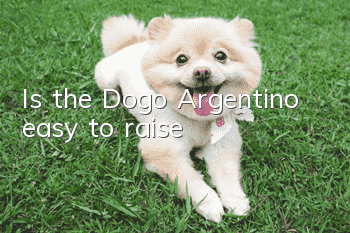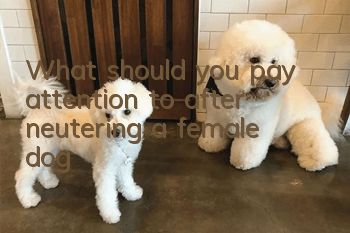Is the Dogo Argentino easy to raise?

The Dogo, also known as the Argentinian Dogo or the Argentine Mastiff, means bulldog in Spanish semantics. In South America, the Dogo is one of the most outstanding breeds. At that time, they were mainly bred to guard manors or capture wild beasts. There were many pumas and wild boars in Spain at that time, and people at that time were often threatened by their lives and property because of these two creatures. Therefore, people urgently need an animal that can match them to protect humans, and the Dogo came into being. So what is so special about this kind of dog?
The Dogo belongs to the common bulldog type, with a strong and powerful body, balanced proportions and a tall stature. The overall appearance is very harmonious and energetic, thanks to its strong muscles, not too loose subcutaneous tissue and the attachment to it. Its tough and elastic skin. Its steps are firm and light, showing its resourcefulness and quick adaptability, and its behavior also reveals its optimistic nature. Its amazing white and beautiful appearance, kindness and love for life and human nature make it He can easily win people's favor.
【Appearance characteristics of the Dogo Dog】
1. Proportion
The Dogo's head is of medium shape, the length of the lips and muzzle is equal to the length of the skull, and the height of the shoulders is equal to the height of the croup. The depth of the chest accounts for 50% of the height of the shoulders, and the length of the body is about 10% more than the height of the body.
2. Head
The Dogo's head looks strong and strong, with no sharp edges. There is a concave spherical surface above the head. The main reason is that their chewing muscles and neck are relatively developed. Moreover, there are some depressions on their faces, and the connection between the head and neck forms a strong arch.
3. Mouth and nose
The mouth has a less obvious outline, like a transition from a spherical skull to a slightly concave front. Viewed from the side, the prominence of the brow bone creates a distinct line. The child has wide nostrils. The nose is black, slightly upturned forward, and the end of the nose is within the outer arc of the muzzle. Viewed from the side, the front line of the nose is a vertical line, flush with the edge of the maxilla or slightly protruding forward. The muzzle is strong, slightly longer than deep, very broad, and slightly tapered at the edges. The nasal bone line is slightly concave, which is a characteristic of almost all Dogos.
4. Eyes
The eyes are dark or light brown, covered by eyelids with black pigmentation. The lack of melanin in the eyelids is not a disadvantage. They are almond-shaped, located at medium height, and the distance between the eyes needs to be wide. Overall, the eyes must be alert, lively, and at the same time must have a determined expression, especially in males.
【How to raise Dogo dogs】
1. Habits
The Dogo is lively, honest, humble, friendly, does not bark excessively, and is aware of its own strength. It should not be aggressive, this is something that should be kept in mind. Its sense of dominance makes it constantly fight with other dogs of the same gender for territory, especially male Dogo dogs. As a hunter, it is smart, quiet, brave and fearless, suitable as a guard dog and suitable for urban breeding.
2. Feeding
In order to avoid the problem of picky eating in Dogo dogs, it is necessary to train Dogo dogs to develop stable dining habits from an early age. The frequency of meals is recommended to be four times a day for three months, three times a day for three to eight months, and twice a day for eight months and above. For example, during meals, let the dog develop the habit of concentrating on eating. If the meal is not finished within a limit of thirty minutes, put away the feed and wait until the next meal time to provide it; do not let the dog develop the habit of eating whenever he wants and not when he is not. I still have the bad habit of having to eat later.
- Classification and treatment of canine urolithiasis
- What are the training tips for Cotton Veil Dogs?
- How to treat canine coronavirus symptoms
- What medicines are used to treat canine distemper?
- What emotional changes will a dog experience after having its hair cut?
- Teach you how to tell if your pet dog is pregnant
- Why do puppies roll their eyes when sleeping? A must-read for dog owners!
- 5 diseases that dogs are prone to suffer from in autumn, prevention is the most important!
- Are Teddy dogs aggressive?
- What causes exocrine pancreatic insufficiency in dogs?



